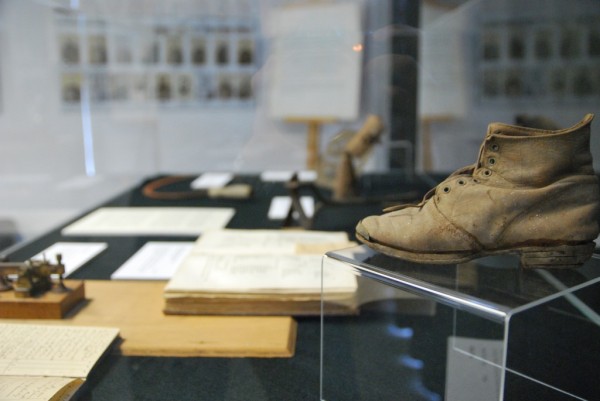19th-century life through the eyes of Salvado
SALVADO EXHIBITION OFFERS INSIGHT TO 19-CENTURY LIFE

The Rosendo Salvado Exhibition features a rare collection 19th-century photographs and artefacts. PHOTO: Marco Ceccarelli
One of the final events surrounding the bicentenary of the birth of the Benedictine Community of New Norcia founder has recently been held at the State Library of Western Australia.
The Rosendo Salvado Exhibition featured a rare collection 19th-century photographs and artefacts about Dom Rosendo Salvado, offering an invaluable and unique insight into Western Australian history.
Founded in 1847, the New Norcia mission earned great respect for its record of Aboriginal achievement and was recognised as “the single success” in 19th-century Australian mission history. Surprisingly, it was also the most photographed.
Over his 54 years at the mission, Salvado became Abbot, Bishop, educator, landholder and missionary for the Aboriginal people. He was a passionate promoter of the New Norcia mission and used photographs to both report and fundraise to his supporters in Europe.
The exhibition told of the organised and collaborative life lived at the mission by the Indigenous Yued people and the Benedictine monks.
On display were a number of objects and photographs dating back to 1867 which depicted farming, wool production and recreational activities, such as the composition and playing of music and the creation of a cricket team, as well as Salvado’s plans for the building of a new road between New Norcia and Bindoon.
Wool production and farming were the economic engines of the New Norcia Mission. In 1886, the farm and garden amounted to 150 cattle, 250 horses, 400 acres of cultivated crops and 15 acres of vineyards. Throughout the 1880s, the produce from farming was enough, on average, to sustain a community of approximately 250 people – a valuable achievement given that at its height in the 1890s there were more than 200 Aboriginal people resident at New Norcia.
The exhibition was the subject of the Ways of Telling symposium held at the State Library of WA from 13-14 November 2014.
The symposium hosted presentations from a number of monks, community members and academics from Australian universities and institutions, including the New Norcia Aboriginal Corporation, the University of Western Australia, the University of Southern Queensland, Monash University, Deakin University, Murdoch University, Curtin University and the University of Divinity.
Both the symposium and the exhibition drew heavily on the most recent research carried out at the New Norcia archives. The history of New Norcia’s success, both as a Christian mission and thriving community, seems to lie in the collaborative efforts of the monks and Yued people.
In this remote part of Western Australia, Salvado established a stable, self-sufficient community based on agriculture. Men who lived in cottages with their families either worked their own land and kept the produce or worked in the monastery farm or trade shops and were paid for their labour.
Salvado was also an advocate for Aboriginal people and often lobbied government both for and against policies concerning Aborigines. The abundant fruits of this dynamic relationship helped establish New Norcia as one of the great success stories of Western Australian history.
The Rosendo Salvado exhibition ran at the State Library of Western Australia until 30 November 2014.
